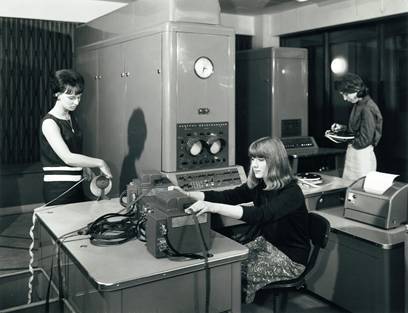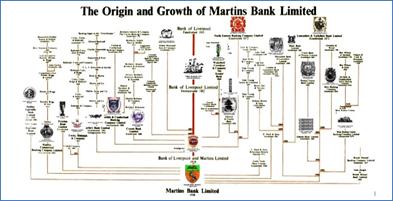|
  Welcome to Martins
Bank Archive, a treasure trove of nostalgic images and memories of the bank
that always went to extremes to be helpful. Welcome to Martins
Bank Archive, a treasure trove of nostalgic images and memories of the bank
that always went to extremes to be helpful.

1
November 1968 marked what was billed as “The End of the Beginning”, but
which was seen by many as the BEGINNING OF THE END.
The assimilation into Barclays of Martins Bank, its traditions, services,
identity, branches and some four hundred years of history, takes just over
a year to complete.

 By
the Autumn of 1968 the Bank is a subsidiary company of Barclays, and is
allowed one more year to continue displaying its name on its buildings,
stationery and advertising. The
stage is set, and the show must go on.
By the end of 2018 there will be fewer than one hundred branches
left, of the seven hundred plus that were taken into Barclays at Christmas
1969. That this many still survive in today’s banking climate is not simply
a miracle – it is also testament to the solid foundations of Martins Bank
and the many individual banks from which Martins was derived. As we look
back over more than fifty of the most changeable years for British Banking,
we can take pride in Martins Bank knowing that it fell honourably on its
sword: A victim of its own success,
the Bank’s determination to embrace change and new technology has now
largely done away with the need for branch Banking. As those technologies
evolve and mature, they replace men and women with machines powered by
algorithms that in the late 1950s were still the stuff of science
fiction. By
the Autumn of 1968 the Bank is a subsidiary company of Barclays, and is
allowed one more year to continue displaying its name on its buildings,
stationery and advertising. The
stage is set, and the show must go on.
By the end of 2018 there will be fewer than one hundred branches
left, of the seven hundred plus that were taken into Barclays at Christmas
1969. That this many still survive in today’s banking climate is not simply
a miracle – it is also testament to the solid foundations of Martins Bank
and the many individual banks from which Martins was derived. As we look
back over more than fifty of the most changeable years for British Banking,
we can take pride in Martins Bank knowing that it fell honourably on its
sword: A victim of its own success,
the Bank’s determination to embrace change and new technology has now
largely done away with the need for branch Banking. As those technologies
evolve and mature, they replace men and women with machines powered by
algorithms that in the late 1950s were still the stuff of science
fiction.

(Yawn)
- Surely it’s just about some old bank, isn’t it?

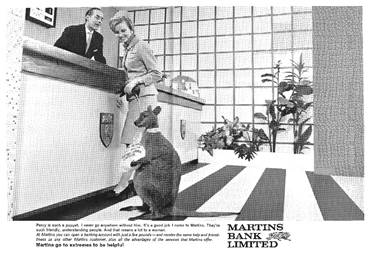 No,
it is NOT just about a Bank – far from it!
The success of Martins Bank Archive is not down to the one thousand
or so buildings that have been knocked down, or gradually turned into
betting shops and cafés over the years, it is about the lives, talents,
hopes and achievements of the people
who worked in them, and whose commitment to go to extremes to be helpful
still continued to shine through under their new employer, from the end of
1969. Many of those people have
helped us to shape this record of an age that although not so long ago,
seems further than a universe away from where we are today. It seems hard
to believe that in our first few years online we have reached many
thousands of people right around the World, who have contributed to the
archive – a precious memory of “how we used to do things”, hundreds of
photographs from private collections, physical items we can photograph or
scan and share with our visitors. No,
it is NOT just about a Bank – far from it!
The success of Martins Bank Archive is not down to the one thousand
or so buildings that have been knocked down, or gradually turned into
betting shops and cafés over the years, it is about the lives, talents,
hopes and achievements of the people
who worked in them, and whose commitment to go to extremes to be helpful
still continued to shine through under their new employer, from the end of
1969. Many of those people have
helped us to shape this record of an age that although not so long ago,
seems further than a universe away from where we are today. It seems hard
to believe that in our first few years online we have reached many
thousands of people right around the World, who have contributed to the
archive – a precious memory of “how we used to do things”, hundreds of
photographs from private collections, physical items we can photograph or
scan and share with our visitors.

History
is NOT for
sale…

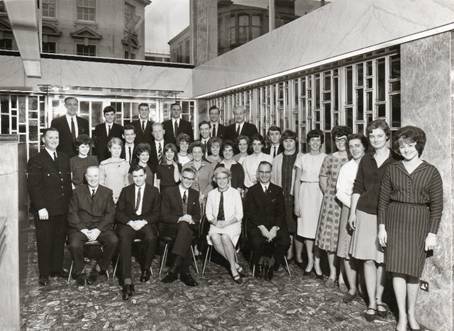 Then
there is the extraordinary generosity of leading archives, newspapers,
specialist journals all keen to share with us and help us bring Martins
Bank back to life across our 1300 pages. Our policy is that history should
not be for sale, and we have established links with almost 100 companies,
newspapers, groups and history societies, who are happy to contribute in
return either for a simple copyright notice, or to have their logo and web
site linked to us. Then
there is the extraordinary generosity of leading archives, newspapers,
specialist journals all keen to share with us and help us bring Martins
Bank back to life across our 1300 pages. Our policy is that history should
not be for sale, and we have established links with almost 100 companies,
newspapers, groups and history societies, who are happy to contribute in
return either for a simple copyright notice, or to have their logo and web
site linked to us.

It
is also the contributions of the people who were there, and of those such
as Barclays Group Archives, who like ourselves preserve the records of
Martins Bank, for which we are so indebted.
This valuable mixture of input keeps our visitors coming back for
more and more nostalgia as they look at the way life was lived and worked
between 1928 and 1969 – one of the most changeable periods in modern
history. So it is definitely NOT
just about a bank, it is much more of a window on those times when the word
BANK meant safety, stability – reliability, and represented a place where
your face was known and your finances were kept in check by human beings
whose only “excessive bonus” was £10 at Christmas if they were lucky! We show how life was lived by the
ordinary people who worked for Martins – from being “mentioned in
dispatches” in World War 2, or achieving prominent local office, to the men
and women of the Bank’s Dramatic and operatic Societies letting their hair
down, AND moving with the times. The second decade of the 21ST Century has sounded the death knell of Branch
Banking, as we switch from needing human
contact to using our online devices to move money instantly to anywhere on
the planet. This makes remembering those who made all this possible an ever
more important duty, and one which we will always take seriously.

Martins Bank Archive exists to advance the education of
British social history related to aspects of banking practices and
technologies, and those who offered and used them in the 1960s. We identify and evaluate in particular,
records and artefacts relating to Martins Bank Limited, including its
former incarnations and its constituent banks, which will be of use to
current and future researchers, acquiring such items for the archive and
organising procedures and systems for their storage and preservation. Martins Bank Archive is a voluntary
venture, and does not profit or seek to profit in any way from the display
or other use of the images and other items in its possession, and every
effort is made to establish and declare their ownership. Contributors and copyright holders are
prominently acknowledged. Whilst
Martins Bank Archive has no connection with the day-to-day trading
activities of the Barclays Group of companies, we are grateful for the
ongoing and generous guidance, advice and support of Barclays Group Archives, in
the building and shaping of this online social history. We wouldn’t say we
were “ahead of our time”, but this extract from the Editorial of Martins
Bank Magazine’s Summer 1963 Edition seems particularly pertinent to our
aims as an archive…

|
 Somewhere,
a long way back, someone said 'Hats off to the past! Coats off to the
future!' and we doubt whether anyone could better that. Our Bank is still
small enough, thank heaven, for those in it to be seen and known
personally by a great many people, yet it is big enough to stand alone.
Gresham's grasshopper still has a proud place on our coat of arms and the
liver bird has never felt inclined to drop his seaweed in favour of the
succulent insect above his head. To do so would only dissolve a partnership
recognised and respected throughout the world. A hundred years hence
someone may turn these pages not only to see what has been said to-day
but to find out what the Bank was like and what was happening to those in
it during the 1960's. We like to think that in this magazine they will
see us as we are and, perhaps, sense that quality which embraces our
strength, our weaknesses, and all other characteristics and which can
best be summed up as 'something which money can't buy'. One important
point might, however, be overlooked because it was made by our Chairman
in the Annual Report for 1962 from which we quote:— Somewhere,
a long way back, someone said 'Hats off to the past! Coats off to the
future!' and we doubt whether anyone could better that. Our Bank is still
small enough, thank heaven, for those in it to be seen and known
personally by a great many people, yet it is big enough to stand alone.
Gresham's grasshopper still has a proud place on our coat of arms and the
liver bird has never felt inclined to drop his seaweed in favour of the
succulent insect above his head. To do so would only dissolve a partnership
recognised and respected throughout the world. A hundred years hence
someone may turn these pages not only to see what has been said to-day
but to find out what the Bank was like and what was happening to those in
it during the 1960's. We like to think that in this magazine they will
see us as we are and, perhaps, sense that quality which embraces our
strength, our weaknesses, and all other characteristics and which can
best be summed up as 'something which money can't buy'. One important
point might, however, be overlooked because it was made by our Chairman
in the Annual Report for 1962 from which we quote:—
'Martins Bank with its national network
of branches is in a strong position which, in the view
of your Board and Management, would not
be enhanced by a wider association.'
We hope
that those who come after will understand how, in the age of the
rat-race, the gimmick and the brash headline, that quietly restrained but
immensely heartening statement amounted almost to an understatement.
Nevertheless, it found instant and universal approval.
 
|
|
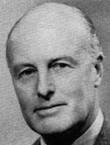
|
How sad that a crystal ball was not available in 1962 to foretell
that in fewer than six years, Martins Bank would indeed have to be
“enhanced by a wider association”, spoken of by the Chairman of Martins
Bank, Sir Cuthbert Clegg (pictured, left), in a BBC Interview in October
1968:
“Though Martins eventually will become a completely integrated
Bank with Barclays its identity will not disappear immediately. I feel
sure that Martins' name will never be lost sight of, because of
the Bank's great history”.
|
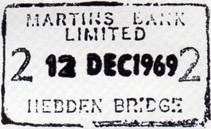
Hebden Bridge Branch
1893 to 06/04/2018
|
Were
things always as “bad” as they are today?

 In the twenty-first century we are used to hearing horror
stories about our banks almost every day of the week. The term “Banker” is freely used to the
point where those on the front line of banking - the increasingly hard to
find friendly - and usually grossly underpaid - faces who deal with your
day-to-day transactions - are not distinguished from those who never even
meet the public, and whose risk taking, along with that of their bosses,
has caused many of the problems we read about. Was it always like
this? Well, of course not. The
golden age of banking seems to end about the time that Barclays takes over
Martins Bank. From that point on,
competition is the new king. The
hitherto simple waters of banking become muddied – the nuts and bolts of
running a bank become “products”, and cashiers become “salespeople”. In the twenty-first century we are used to hearing horror
stories about our banks almost every day of the week. The term “Banker” is freely used to the
point where those on the front line of banking - the increasingly hard to
find friendly - and usually grossly underpaid - faces who deal with your
day-to-day transactions - are not distinguished from those who never even
meet the public, and whose risk taking, along with that of their bosses,
has caused many of the problems we read about. Was it always like
this? Well, of course not. The
golden age of banking seems to end about the time that Barclays takes over
Martins Bank. From that point on,
competition is the new king. The
hitherto simple waters of banking become muddied – the nuts and bolts of
running a bank become “products”, and cashiers become “salespeople”.
 Competition does not, however, seem to be the fault of
any one particular bank. It gathers
momentum amongst them all, as those in charge realise that money doesn’t
only make more money when it is invested or loaned. The same money can produce an income if
you class looking after it in ever more convoluted ways as a service,
and make charges for that service.
The days of the bank manager knowing his customers’ strengths and
weaknesses are soon numbered, as computers make it possible to replace more
and more tasks previously undertaken by real
people; and so we reach today’s
permanently confused and confusing banking market, where no-one really
seems to know what direction they are going in, previously sound knowledge
of local businesses and financial trends has been lost along with
many of those businesses themselves, and much of what Martins Bank stands
for in the 1960s has been wiped away… Competition does not, however, seem to be the fault of
any one particular bank. It gathers
momentum amongst them all, as those in charge realise that money doesn’t
only make more money when it is invested or loaned. The same money can produce an income if
you class looking after it in ever more convoluted ways as a service,
and make charges for that service.
The days of the bank manager knowing his customers’ strengths and
weaknesses are soon numbered, as computers make it possible to replace more
and more tasks previously undertaken by real
people; and so we reach today’s
permanently confused and confusing banking market, where no-one really
seems to know what direction they are going in, previously sound knowledge
of local businesses and financial trends has been lost along with
many of those businesses themselves, and much of what Martins Bank stands
for in the 1960s has been wiped away…
  Fifty years since
Martins was absorbed into Barclays, we should not forget the contribution
made by this amazing financial institution, and Martins Bank Archive is
proud to offer its collections and this website as both a social history
and a permanent reminder, with more than twelve hundred pages of
information, packed with memories and images of Martins down the
years. As the first major national
bank to be based outside London, first with mobile branches, first with
computers, first to operate a cash machine that uses a plastic card and
PIN, first to recognise and properly use the full power of branding in the
swinging 60s, Martins really is a first among banks – a 1960s icon! Fifty years since
Martins was absorbed into Barclays, we should not forget the contribution
made by this amazing financial institution, and Martins Bank Archive is
proud to offer its collections and this website as both a social history
and a permanent reminder, with more than twelve hundred pages of
information, packed with memories and images of Martins down the
years. As the first major national
bank to be based outside London, first with mobile branches, first with
computers, first to operate a cash machine that uses a plastic card and
PIN, first to recognise and properly use the full power of branding in the
swinging 60s, Martins really is a first among banks – a 1960s icon!

  By the end of its
days as the largest of the “Small Six” Banks, Martins has operated at just
over 1000 branch and office addresses in England and Wales, and with over
700 still open by 1969, not to mention district departments and subsidiary
companies, Martins’ presence is strong, particularly throughout the North
of England where it seems that almost every town and village has its own
Branch. Many of Martins’ new 1960s buildings are beautifully designed
with sumptuous interiors, and stand alongside the more traditional bank
branches as testament to the bank that always goes to extremes to be
helpful. By the end of its
days as the largest of the “Small Six” Banks, Martins has operated at just
over 1000 branch and office addresses in England and Wales, and with over
700 still open by 1969, not to mention district departments and subsidiary
companies, Martins’ presence is strong, particularly throughout the North
of England where it seems that almost every town and village has its own
Branch. Many of Martins’ new 1960s buildings are beautifully designed
with sumptuous interiors, and stand alongside the more traditional bank
branches as testament to the bank that always goes to extremes to be
helpful.
To navigate the site
please choose from the various on-screen menus and use your browser’s
forward and back buttons. Martins Bank Archive is a voluntary venture, not for profit, and
aims simply to act as a historical record that is accessible to all. We always need images of Martins
Bank Branches - especially covering the period 1950 to 1969 (just before
the bank was taken over by Barclays).
Exterior AND interior
shots, pictures of staff and especially images of everyday artefacts such
as cheques, paying in slips and product leaflets are particularly
welcome. We will be happy to include
acknowledgements and where appropriate links to the external web sites of
those who provide items, memories and/or help. Don’t forget to visit our
micro site – LEWIS’S BANK ARCHIVE, which tells the
fascinating story of Lewis’s Bank, a unique and major force in Department
Store Banking from 1928 to the mid-1980s.
Finally, our MOST WANTED feature gives details
of those items and images we are keen to trace. We will also be delighted to read your
personal memories of Martins on our FACEBOOK® page. If you worked for Martins Bank, and we do
not have a picture of you, we will be pleased to include any relevant
pictures that you may possess. We hope you enjoy your visit to
Martins Bank, and that you will want to visit our 1200+ pages again and
again…

“The Song is Ended, but the Melody Lingers on…”

|
Left to Right: Burnley, Heaton Chapel,
Blackpool Whitegate Drive, Leeds Vicar Lane, and Scarborough South
Cliff.
|

|

A huge resource…

 Martins
Bank Archive offers a huge resource of information about the Bank, its
history, products, ideas and staff, over nearly 1200 online pages. The online section of Martins Bank
Archive has become a valuable resource to people tracing their family
tree. We have thousands of images of
Martins Bank Staff, many of whom are now aged between 58 and 90+. The bulk of enquiries received by the
archive are from people who would like career details or copies of images
either of themselves, or their loved ones who worked for the bank and are
now no longer with us. Our staff
database project, which began in 2009, is now largely complete for the period 1946 to 1969. It
contains more than a quarter of a million entries and cross-references for
staff at all stages of career from New Entrant to Retirement. Marriages and Deaths are also recorded
for this period. The bulk of this
information is scanned directly from the 96 issues of Martins Magazine, and
is as complete as it can be. We
cannot guarantee to be able to produce FULL
career records for every member of the staff. We
are now actively adding as much pre 1946 information as we can
find. In addition to career
information, we can, from the Staff Database, supply details of obituary
notices printed in the Bank Magazine, and the text of articles written about
staff. These have already proved
useful to a number of people wanting to add information about the working
lives of members of their family tree. Martins
Bank Archive offers a huge resource of information about the Bank, its
history, products, ideas and staff, over nearly 1200 online pages. The online section of Martins Bank
Archive has become a valuable resource to people tracing their family
tree. We have thousands of images of
Martins Bank Staff, many of whom are now aged between 58 and 90+. The bulk of enquiries received by the
archive are from people who would like career details or copies of images
either of themselves, or their loved ones who worked for the bank and are
now no longer with us. Our staff
database project, which began in 2009, is now largely complete for the period 1946 to 1969. It
contains more than a quarter of a million entries and cross-references for
staff at all stages of career from New Entrant to Retirement. Marriages and Deaths are also recorded
for this period. The bulk of this
information is scanned directly from the 96 issues of Martins Magazine, and
is as complete as it can be. We
cannot guarantee to be able to produce FULL
career records for every member of the staff. We
are now actively adding as much pre 1946 information as we can
find. In addition to career
information, we can, from the Staff Database, supply details of obituary
notices printed in the Bank Magazine, and the text of articles written about
staff. These have already proved
useful to a number of people wanting to add information about the working
lives of members of their family tree.

Smile, please!
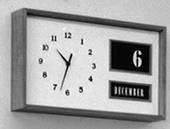 Please
note that the images on the website have been specially processed to ensure
that they will not enlarge without distorting. If you would like a copy of a particular
image, please get in touch with us at martinsbankarchive@btinternet.com.
A large number of our own photographs of Martins’ branches and staff are
available – these come from Martins Bank Magazine, and have been in the
public domain for between at least 50 years. Please note however, that we do not
supply copies of any of the pictures featured on the website that are attributed “image © Barclays Ref:” without the
permission of Barclays Group Archives.
These items are on loan to us, and if copied, will infringe
Barclays’ copyright, which could result in legal action against those who
copy them. Please
note that the images on the website have been specially processed to ensure
that they will not enlarge without distorting. If you would like a copy of a particular
image, please get in touch with us at martinsbankarchive@btinternet.com.
A large number of our own photographs of Martins’ branches and staff are
available – these come from Martins Bank Magazine, and have been in the
public domain for between at least 50 years. Please note however, that we do not
supply copies of any of the pictures featured on the website that are attributed “image © Barclays Ref:” without the
permission of Barclays Group Archives.
These items are on loan to us, and if copied, will infringe
Barclays’ copyright, which could result in legal action against those who
copy them.

Enquire within…
Please note that the Barclays Group
Archives web site is currently undergoing maintenance. If you click on the
button below, you will be taken to the JISC site pages for Barclays Group
Archives, which does offer information about the extensive collections of
historical material maintained by BGA…
|

![]()



















